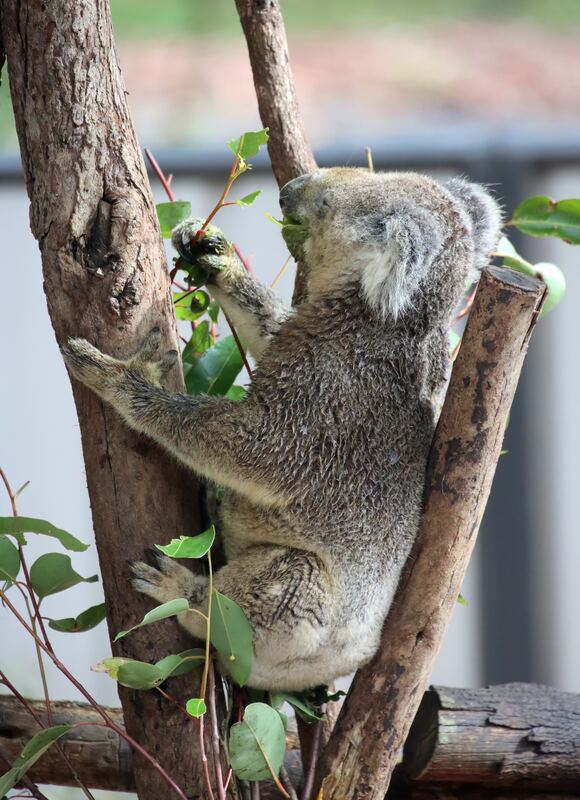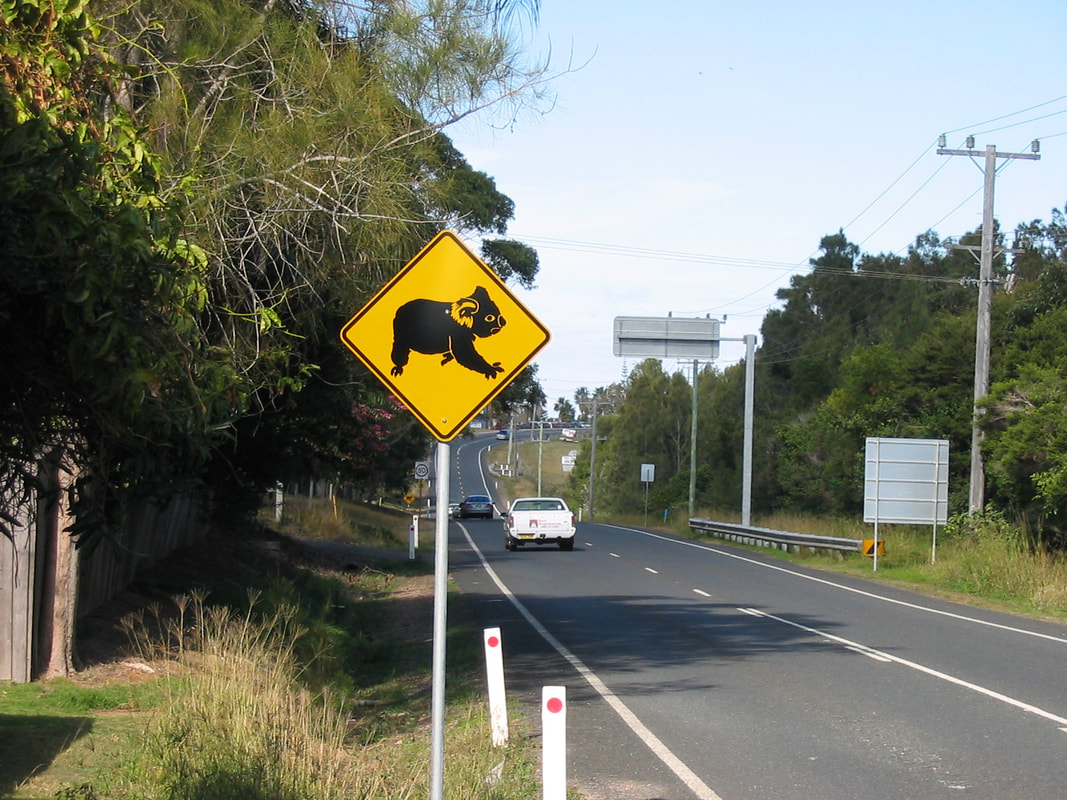Walking home from Primary School through the local tree lined park I could not help myself, I was somehow attracted to their ever-spreading branches. Though warned by my mother to come straight home every afternoon I made a detour to experience the thrill provided within the foliage of these forbidden playthings. There were cicadas to catch, bird nests to check along with the sheer pleasure of climbing high into the branches. It seems many climbers that I have met through the years were similarly attracted to their suburban ‘Ents.’
The human hand is fortunately designed to grip branches (and rock holds) as our elongated thumb is able to oppose our fingers allowing us to grip, grasp, and make precise movements. As climbers we make use of this ability without thought as we move over rock, place protection, and clip the rope. This is an advantage that many animals and primates do not have. But what if you had two thumbs? Apart from being a better climber you would certainly be regarded as a bit of a freak.
There is an Australian animal with two thumbs - the koala - and it is an expert klimber. In case there are any doubters out there let’s follow the route of this fluffy eared marsupial as it sends a tall eucalypt.
The human hand is fortunately designed to grip branches (and rock holds) as our elongated thumb is able to oppose our fingers allowing us to grip, grasp, and make precise movements. As climbers we make use of this ability without thought as we move over rock, place protection, and clip the rope. This is an advantage that many animals and primates do not have. But what if you had two thumbs? Apart from being a better climber you would certainly be regarded as a bit of a freak.
There is an Australian animal with two thumbs - the koala - and it is an expert klimber. In case there are any doubters out there let’s follow the route of this fluffy eared marsupial as it sends a tall eucalypt.
Koalas have great cultural significance to Aboriginal Australians and feature in [their] Dreamtime stories, songs, and rock art.”
|
|
ABOVE: Klick images to enlarge and get the whole epik and kute koala klimbing experience (and photo kredits) :-)
In over five decades of accessing Australian crags through bush and forests I have only spied koalas on two occasions. Both sightings occurred in the 1970’s. In 1973 while walking with Ben Sandilands down the switchback trail from Mt Rosea in the Grampians, we kept on running into a big irascible koala in the middle of each switchback as he grunted and made his way downhill. On the second occasion Ray Lassman and I had just left the trail above Ogma Hut making our way towards Bluff Mountain in the Warrumbungles when we came across a female with a joey on her back on a low bush. On both occasions we were able to get very close to them. Unfortunately, I didn’t take photos.
Spotting these critters requires you to be looking up into the branches and foliage of the trees. Belay glasses might help but either way you are sure to run into a rock, stump, tree or walk over a precipice if you continue walking. Even being stationary and looking intently it is difficult to spot these arboreal, herbivorous marsupials.
Since Koalas live on a diet of eucalyptus leaves, they have a specialised digestive system that allows them to break down these poisonous leaves that are also extremely low in nutrients. It takes a lot of energy for them to munch and digest the 500 grams to 1 kilogram that they eat in a day therefore they sleep high in the trees for 18 to 22 hours a day. Fortunately, they don’t need much water as the eucalyptus leaves contain up to 50% moisture. So, either you look for Koalas or go climbing, you can’t do both.
Spotting these critters requires you to be looking up into the branches and foliage of the trees. Belay glasses might help but either way you are sure to run into a rock, stump, tree or walk over a precipice if you continue walking. Even being stationary and looking intently it is difficult to spot these arboreal, herbivorous marsupials.
Since Koalas live on a diet of eucalyptus leaves, they have a specialised digestive system that allows them to break down these poisonous leaves that are also extremely low in nutrients. It takes a lot of energy for them to munch and digest the 500 grams to 1 kilogram that they eat in a day therefore they sleep high in the trees for 18 to 22 hours a day. Fortunately, they don’t need much water as the eucalyptus leaves contain up to 50% moisture. So, either you look for Koalas or go climbing, you can’t do both.
|
Koala Facts:
|
Sadly, in early 2022 the Koala was officially listed as ‘Endangered’ in Queensland, New South Wales, and the Australian Capital Territory.
The factors contributing to this are listed below.
The factors contributing to this are listed below.
- Loss of habitat
- Bushfire – climate change
- Increased disturbance by humans – stress
- Injury or death from traffic
- Injury or death from dogs and cats
- Increased competition for food and territory because of overcrowding
- Increased stress making them more susceptible to disease – chlamydia and retro-virus
|
|
|
The clearing of forest continues unabated in Victoria, New South Wales and Queensland. The resulting fragmentation of habitat results in the many factors listed above as koalas are forced to spend more time on the ground in the search for food and shelter.
In my state of New South Wales, the government has legislated a Great Koala National Park in the north-eastern section of the State. An important member of the government stated that: “They were getting on with the job of creating the national park, but it could not rush in a moratorium on logging”. Only 5% of the protected area will be spared from logging. Likewise, Victoria will cease [all] logging of old-growth forests from January 2024 but will exclude its western forests. Meanwhile logging continues unabated in the state as it does in Queensland. So, although the koala is protected, its habitat is not. |
While as climbers we all have adopted the concept of LNT (Leave No Trace), it would seem that our governments, both State and Federal, are also striving to do the same.
Sadly, our iconic and symbolic "Aussie Klimbers" are predicted to be extinct by 2050.
Sadly, our iconic and symbolic "Aussie Klimbers" are predicted to be extinct by 2050.
Help for Koalas
Author Keith Bell was inspired to write this article after visiting the Port Stephens Koala Hospital and meeting Tanilba Bay Glen, the little guy in the laundry basket below. He was so impressed with the climbing ability of its inhabitants, the hardships and stresses that they face in the wild and the passage of Threatened Species Day on the 7th September 2023, that he thought Common Climber might like to highlight an Exceptional Climber fueled by gum leaves.
|
YouTube Video: Courtesy Friends of the Koala
|
A video showing the release of a koala back into the wild. Not all injured koalas can be released and most of these are are given sanctuary in spacious treed enclosures. Some, unfortunately, cannot be helped. Check out the incredible climbing skills of this little Aussie! Courtesy The Friends of the Koala
|
|
|
General Resources:
Koala Rescue Organisations:
There are many organisations and volunteers that are working to save and rehabilitate injured koalas as well as to ensure the ultimate survival of the species. Some of them are listed below.
There are many organisations and volunteers that are working to save and rehabilitate injured koalas as well as to ensure the ultimate survival of the species. Some of them are listed below.
|
Queensland:
New South Wales:
|
Victoria:
South Australia:
|















